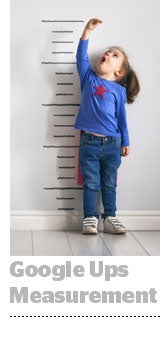Google added more ways for advertisers to measure the effectiveness of their ad campaigns Wednesday, and it got the MRC’s approval in categories such as viewability and impression measurement on YouTube and its buying platform, Google Display & Video 360.
“Advertisers need to trust the metrics and be able to compare across the different media they have, especially in today’s evolving media landscape,” said Babak Pahlavan, senior director of product management for Google’s analytics and measurement solutions.
Customizable metrics, free unique reach and brand lift
Marketers can now apply custom metrics, like GroupM’s 100% viewability standard, within Display & Video 360. They can choose how long they want an ad to appear before they count it as viewable, as well as what percentage the ad is in view.
The change has been in the works for some time, Pahlavan said.
Google has also introduced a free product that measures unique reach across all of the media it buys – both on and off Google. Previously, marketers had to pay a measurement vendor, but Google now offers that capability for free.
Google combines panel data and census data to infer unique reach across all media, not just the media it owns. Advertisers can also see average impressions per user, as well as how many people saw ads.
And Google is letting marketers run brand lift studies for any video buy, not just YouTube. The brand lift studies connect video views to brand recall, consideration and subsequent search queries. Advertisers can also do these studies themselves instead of working with an account manager.
MRC accreditation
Back in February 2017, Google had MRC accreditations across 30 metrics, and it has since added more for categories including served impressions and sophisticated invalid traffic detection.
Within each category, Google sought certification for display and video impressions across desktop, mobile web and in-app.
Google’s internal measurements for its own ad products, like Display & Video 360, have been certified for display and video across desktop, mobile web and in-app.
Google Campaign Manager also includes sophisticated invalid traffic detection, but only on desktop and mobile web. The search product Google Ads includes certification for sophisticated invalid traffic on mobile app.
On YouTube, video ad impressions and viewability received full accreditation from the MRC.
However, if marketers are using a third-party vendor, those integrations can also be MRC certified – but they aren’t yet. Google’s integration with third-party viewability measurement vendors on YouTube – such as Integral Ad Science and DoubleVerify – is still in the MRC’s audit phase, for example.
YouTube is also adding in brand safety verification from DoubleVerify and Integral Ad Science, and it’s seeking MRC certification for brand safety. Beta tests show it is catching 99% of brand safety issues.














